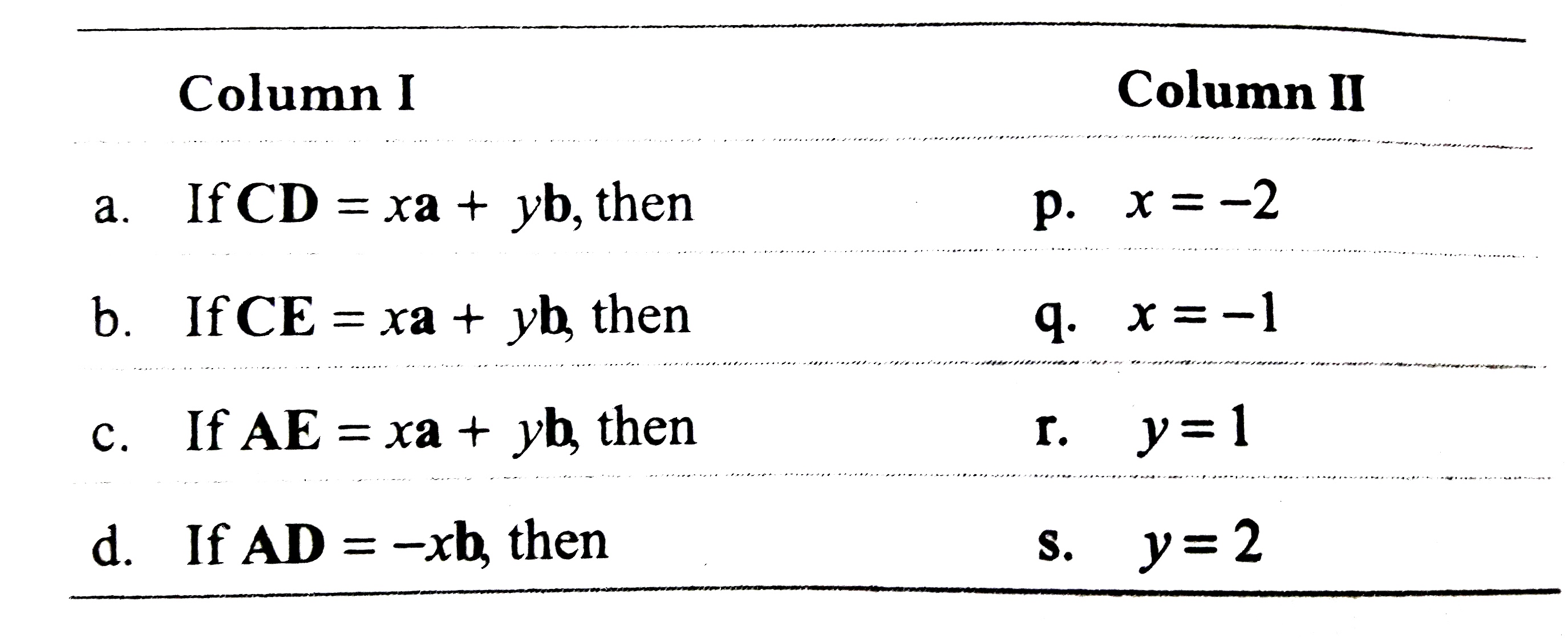If the resultant of three forces F1=pˆi+3ˆj−ˆk,F2=6ˆi−ˆkandF3=−5ˆi+ˆj+2ˆk acting on a particle has a magnitude equal to 5 units, then the value of p isSolution in Punjabi
The correct Answer is:(2,−4)
let R be the resultant. Then
R=F1+F2+F3=(p+1)ˆi+4ˆj
Given |R|=5, therefore R2=25
∵(p+1)2+16=25 or p+1=±3 or p=2,-4
Topper's Solved these Questions
- VECTOR ALGEBRABook:ARIHANT MATHSChapter:VECTOR ALGEBRAExercise:Exercise (Subjective Type Questions)
Explore 8 Videos
- VECTOR ALGEBRABook:ARIHANT MATHSChapter:VECTOR ALGEBRAExercise:Exercise (Questions Asked In Previous 13 Years Exam)
Explore 9 Videos
- VECTOR ALGEBRABook:ARIHANT MATHSChapter:VECTOR ALGEBRAExercise:Exercise (Matching Type Questions)
Explore 1 Video
- TRIGONOMETRIC FUNCTIONS AND IDENTITIESBook:ARIHANT MATHSChapter:TRIGONOMETRIC FUNCTIONS AND IDENTITIESExercise:Exercise (Questions Asked In Previous 13 Years Exam)
Explore 18 Videos
Similar Questions
A vector a has components a1,a2,a3 in a right handed rectangular cartesian coordinate system OXYZ the coordinate axis is rotated about z axis through an angle π2. The components of a in the new system
View SolutionIf vectors −−→AB=−3ˆi+4ˆkand−−→AC=5ˆi−2ˆj+4ˆk are the sides of a ΔABC, then the length of the median throught A is
View Solutiona and b form the consecutive sides of a regular hexagon ABCDEF.

View SolutionLet αandβ be non-zero real numbers such that 2(cosβ−cosα)+cosαcosβ=1. Then which of the following is/are true ?
View SolutionWhen forces F_(1) , F_(2) , F_(3) are acting on a particle of mass m such that F_(2) and F_(3) are mutually prependicular, then the particle remains stationary. If the force F_(1) is now rejmoved then the acceleration of the particle is
View SolutionIf the resultant of three forces →F1=pˆi+3ˆj−ˆk,→F2=6ˆi−ˆkand→F3=−5ˆi+ˆj+2ˆk acting on a particle has a magnitude equal to 5 units, then the value of p is
View SolutionIf the resultant of three forces →F1=pˆi+3ˆj−ˆk,→F2=−5ˆi+ˆj+2ˆkand→F3=6ˆi−ˆk acting on a particle has a magnitude equal to 5 units, then what is difference in the values of p ?
View SolutionIf the resultant of three forces F1=pˆi+3ˆj−ˆk,F2=6ˆi−ˆkandF3=−5ˆi+ˆj+2ˆk acting on a particle has a magnitude equal to 5 units, then the value of p is
View SolutionTwo forces f1=3ˆi−2ˆj+ˆkandf2=ˆi+3ˆj−5ˆk acting on a particle at A move it to B. find the work done if the position vector of A and B are −2ˆi+5ˆkand3ˆi−7ˆj+2ˆk.
View SolutionThree forces →F1=5ˆi+6ˆj+7ˆk,→F2=−3ˆi−2ˆj−2ˆkand→F3=−2ˆi−4ˆj−3ˆk act on a body. What is the direction of the resultant force acting on the body ?
View SolutionIf the resultant of three forces −→F1=pˆi+3ˆj−ˆk,−→F2=6ˆi−ˆk and −→F3=−5ˆi+ˆj+2ˆk acting on a particle has a magnitude equal to 5 units, then the value of p is -
View SolutionIf the resultant of three forces →F1=pˆi+3ˆj−ˆk,→F2=6ˆi−ˆkand→F3=−5ˆi+ˆj+2ˆk acting on a particle has a magnitude equal to 5 units, then the value of p is
View SolutionIf the resultant of three forces →F1=pˆi+3ˆj−ˆk,→F2=−5ˆi+ˆj+2ˆkand→F3=6ˆi−ˆk acting on a particle has a magnitude equal to 5 units, then what is difference in the values of p ?
View SolutionWhen force F_(1), F_(2), F_(3) are acting on a particle of mass m such that F_(2) and F_(3) are mutually perpendicular, then the particle remains stationary. If the force F_(1) is now removed then acceleration of the particle is
View SolutionWhen forces F_(1), F_(2), F_(3) are acting on a particle of mass m such that F_(2) and F_(3) are mutually perpendicular, then the particle remains stationary, If the forces F_(1) is now removed then acceleration of the particle is
View SolutionIf the resultant of three forces →F1=pˆi−3ˆj−ˆk,→F2=−5ˆi+ˆj+2ˆkand→F3=6ˆi−ˆk acting on a particle has a magnitude equal to 5 units, then what is difference in the values of p ?
View Solution
